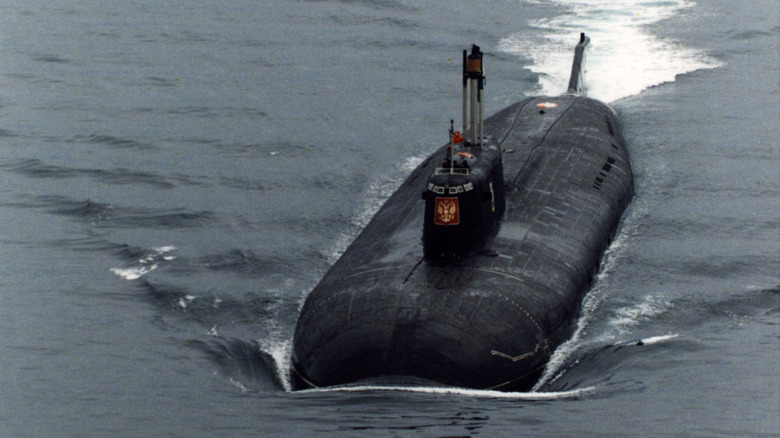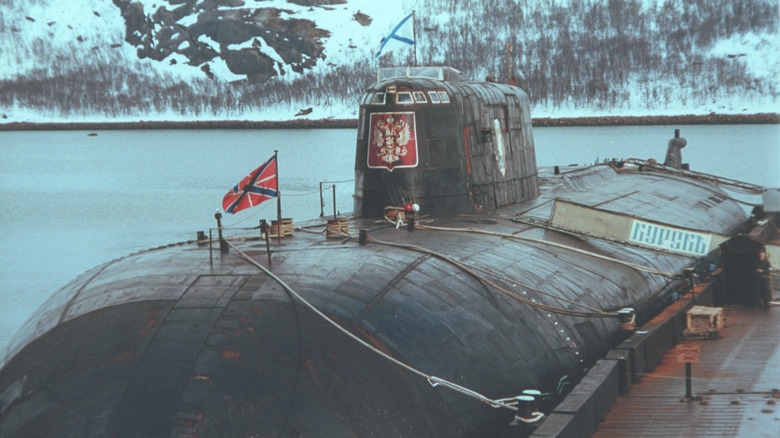The Kursk Disaster: A Terrifying Torpedo Explosion Aboard A Nuclear Submarine
With the recent tragic implosion of the Titan submersible, underwater disasters are at the forefront of public concern, especially incidents involving larger submarines. One such similarly high profile accident is the sinking of the Kursk, a Russian nuclear submarine that exploded in 2000. As a vessel, the Kursk was nothing short of impressive and would have been quite the sight to behold skulking through the icy waters of the Barents Sea in the Arctic Ocean.
Launched in 1994, the submarine was classified as a nuclear-powered guided missile submarine. The Kursk was huge at over 505 feet long. It did not typically carry nuclear munitions, according to the James Martin Center for Nonproliferation Studies. But it wasn't slouch when it came to armaments. It was equipped with 24 missiles. Although it wasn't capable of unleashing nuclear hellfire on a target halfway around the world, it was purpose-built to give NATO forces and other country's naval fleets something to worry about.
Alas, 118 sailors of the Russian Navy were killed as the Kursk sank in 350 feet of water on August 12, 2000. How the submarine actually went down was a relative mystery at the time of the sinking. However, Russian governmental sources pinned the sinking on an explosion inside of one of the torpedo bays.
Outdated equipment
Although a collision with NATO forces was blamed for the sinking by a general, it was ultimately proven that faulty equipment sealed the Kursk's fate. According to the Guardian, a faulty torpedo was the cause. An investigation found that the Kursk was likely equipped with torpedoes containing a substance called HTP — essentially creating a hydrogen peroxide explosion.
"The initial impulse which triggered an explosion of the torpedo was the result of an unusual process of events inside the oxidising agent reserve of the torpedo," Russian Prosecutor General Vladimir Ustinov told reporters.
The seismic activity from the blast was caught by both American Intelligence and the Norwegians, the New York Times reported.
According to the Navy Times, 95 sailors were killed instantly when the Kursk's hull ruptured and it was flooded. The other 23 sailors escaped the explosion and held out in non-flooded parts of the vessel, but even that was not enough as they eventually suffocated when the Russian Navy was unable to get rescue forces on the scene in time. An emergency marking buoy was not deployed. It wasn't until a week later that Norwegian divers were able to crack open the damaged sub and get inside. By then, all 118 crew members had lost their lives.

